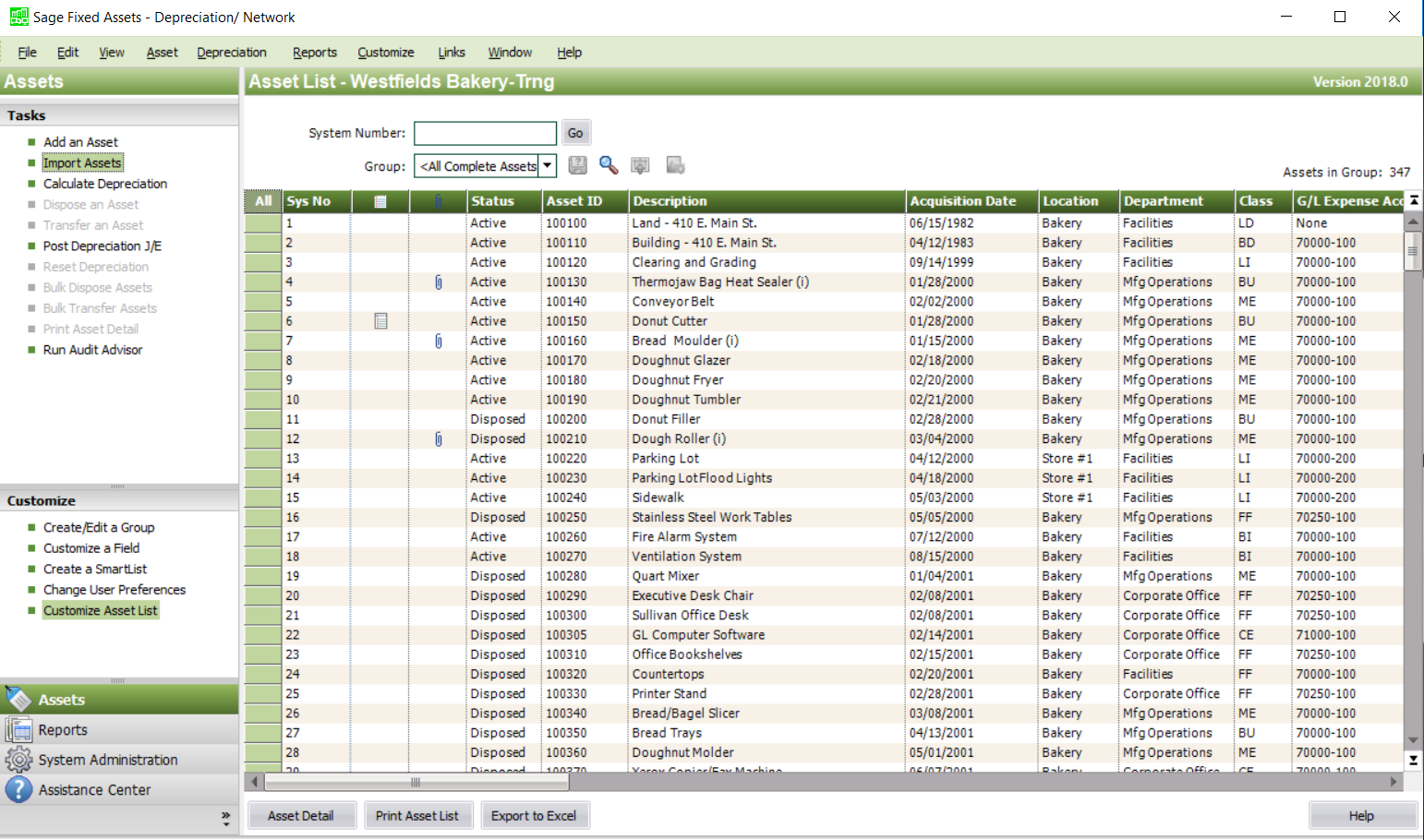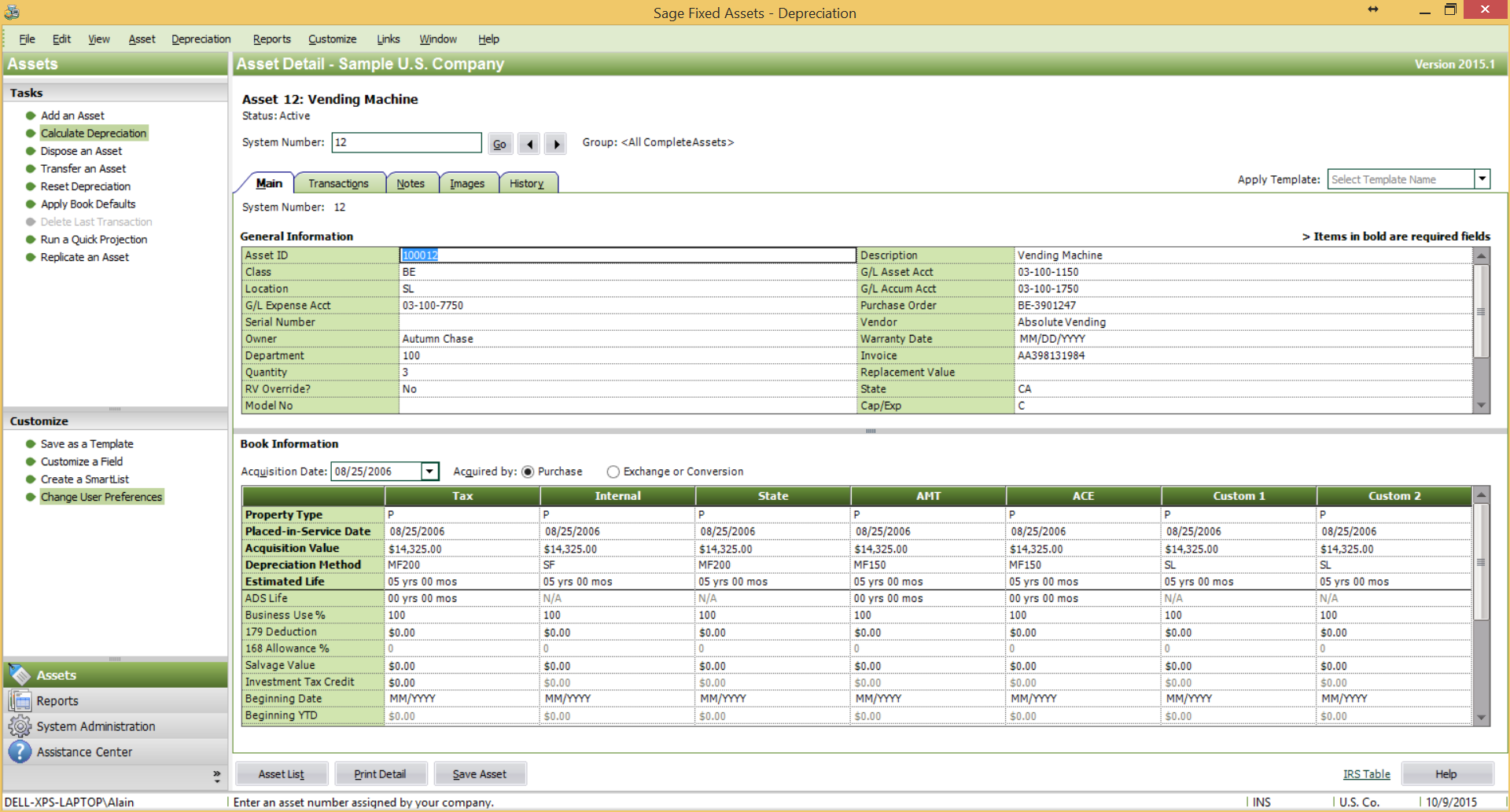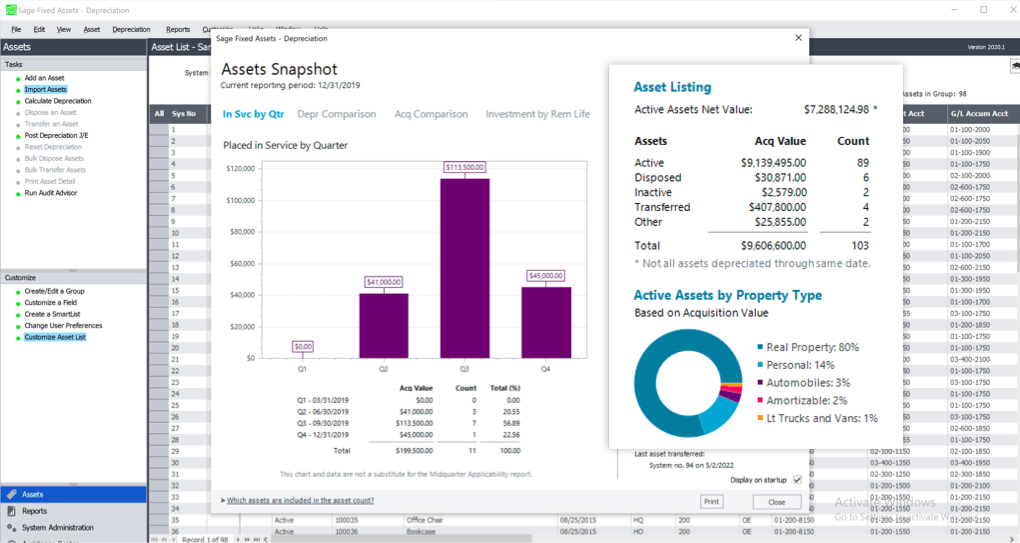Starting with Sage Depreciation Software, this paragraph aims to provide a captivating overview of how businesses can effectively manage their assets with this solution.
It offers a comprehensive look at the key features, functionalities, and benefits of using this software across various industries and businesses.
Overview of Sage Depreciation Software
Sage Depreciation Software is a powerful tool designed to help businesses track and manage their assets’ depreciation over time. This software automates the process of calculating depreciation, ensuring accuracy and compliance with accounting standards.
Key Features and Functionalities
- Automated Depreciation Calculations: Sage Depreciation Software streamlines the calculation process, saving time and reducing the risk of errors.
- Asset Tracking: The software allows businesses to easily track and manage all their assets in one centralized system.
- Reporting Capabilities: Sage Depreciation Software generates detailed reports on asset depreciation, providing valuable insights for financial planning and decision-making.
- Compliance with Regulations: The software ensures that businesses adhere to accounting standards and regulations related to asset depreciation.
Examples of Industries Benefiting from Sage Depreciation Software
- Manufacturing: Manufacturing companies with a large number of assets can benefit from the efficiency and accuracy of Sage Depreciation Software in managing their assets.
- Real Estate: Real estate businesses can use the software to track the depreciation of their properties and ensure compliance with tax regulations.
- Transportation: Companies in the transportation industry can utilize Sage Depreciation Software to manage the depreciation of their vehicles and equipment effectively.
Installation and Setup
When it comes to installing and setting up Sage Depreciation Software, it is important to follow the proper steps to ensure a smooth implementation process.
Installation Process
To install Sage Depreciation Software, you typically need to download the installation file from the official website or a trusted source. Once downloaded, run the installation file and follow the on-screen instructions. Make sure to choose the correct installation directory and complete the installation process as prompted.
Setting Up the Software
After installing the software, the next step is setting it up for first-time use. This involves entering basic company information, such as company name, address, and other relevant details. You may also need to configure user permissions and access levels for different users within the organization.
Configuring the Software
To configure the software according to specific business needs, you can customize depreciation methods, asset categories, and reporting preferences. It is important to tailor the settings to align with your company’s accounting practices and requirements. Additionally, you can set up schedules for asset tracking, depreciation calculations, and reporting to streamline the process and ensure accuracy.
Overall, taking the time to properly install, set up, and configure Sage Depreciation Software can help optimize its performance and functionality for your organization’s unique needs.
Asset Management with Sage Depreciation Software

Sage Depreciation Software offers robust features that help businesses effectively manage their assets, ensuring accurate tracking of depreciation and maintenance of asset records.
Adding Assets to the System and Tracking Depreciation, Sage depreciation software
- Start by entering detailed information about each asset into the software, including asset type, purchase date, cost, and useful life.
- Assign the appropriate depreciation method based on industry standards or company policies.
- The software automatically calculates depreciation expenses and updates the asset’s value over time.
- Regularly review depreciation reports to monitor the performance of assets and make informed decisions.
Best Practices for Maintaining Accurate Asset Records
- Regularly reconcile the physical assets with the records in the software to ensure accuracy.
- Document any changes or disposals of assets promptly to reflect the most up-to-date information in the system.
- Utilize barcode or QR code scanning functionality to streamline the process of adding assets and updating information.
- Train employees on how to use the software effectively to minimize errors and ensure data integrity.
Reporting and Analysis

When it comes to reporting and analysis, Sage Depreciation Software offers robust capabilities that allow businesses to make informed financial decisions based on accurate data.
Types of Reports
Sage Depreciation Software enables users to generate a variety of reports, including depreciation schedules, asset listings, tax reports, and financial statements. These reports provide detailed information on the value and condition of assets, helping businesses track their depreciation expenses accurately.
- Depreciation Schedules: These reports Artikel the depreciation expense for each asset over a specific period.
- Asset Listings: Asset listings provide a comprehensive overview of all assets owned by the business, including details such as purchase date, cost, and current value.
- Tax Reports: Tax reports help businesses comply with tax regulations by providing information on depreciated assets and their tax implications.
- Financial Statements: Financial statements generated by the software offer a snapshot of the company’s financial health, including asset values and depreciation expenses.
Financial Planning and Decision-Making
Businesses can leverage these reports for financial planning and decision-making by analyzing trends in asset depreciation, identifying areas for cost savings, and forecasting future expenses. By understanding the financial impact of asset depreciation, companies can make strategic decisions to optimize their resources and improve profitability.
Final Summary

In conclusion, Sage Depreciation Software emerges as a powerful tool for streamlining asset management, generating insightful reports, and enhancing financial planning for businesses.
Common Queries: Sage Depreciation Software
How does Sage Depreciation Software differ from other asset management tools?
Sage Depreciation Software stands out for its user-friendly interface, robust reporting capabilities, and seamless integration with accounting systems.
Can Sage Depreciation Software handle complex depreciation calculations?
Absolutely, the software is equipped to handle various depreciation methods and intricate asset tracking requirements efficiently.
Is Sage Depreciation Software suitable for small businesses?
Yes, Sage Depreciation Software is scalable and adaptable, making it a suitable asset management solution for small businesses as well.
